If you’ve started looking for a place to stay in Japan, you’ll quickly notice that it’s not just about “hotels.” You might come across words like ryokan, minshuku, or pension, and each one offers a very different experience. Let’s explore what they mean, what makes them special, and how to avoid common mistakes so you can fully enjoy your stay.
日本での宿泊先探しを始めると、すぐに「ホテル」だけではないことに気づくでしょう。旅館、民宿、ペンションといった言葉に出会い、それぞれが全く異なる体験を提供しています。それぞれの意味、特徴、そしてよくある失敗を避ける方法を探り、滞在を存分に楽しむためのヒントをご紹介します。
Ryokan (旅館) – Tradition and Elegance
A ryokan is the classic Japanese inn, famous for tatami rooms, futon bedding, and hot spring baths. But what really makes a ryokan memorable is the food experience.
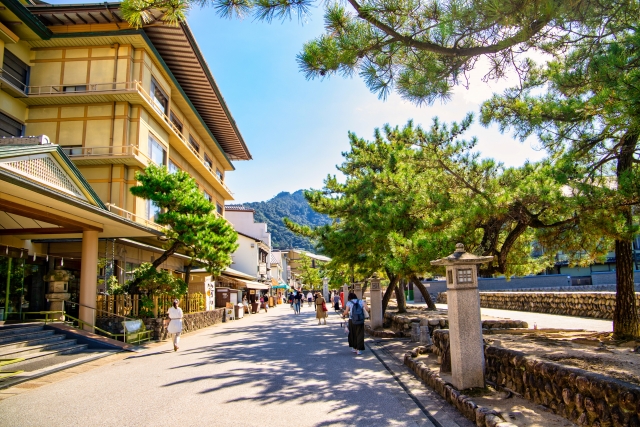
Dinner is often a kaiseki-style meal, beautifully arranged on small plates and lacquerware.
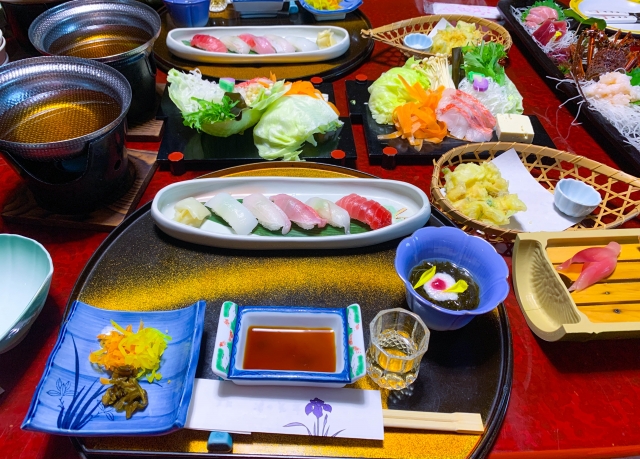
Each dish—from fresh sashimi to seasonal vegetables—looks like a piece of art.
Breakfast is usually a traditional Japanese spread with grilled fish, rice, miso soup, and pickles.
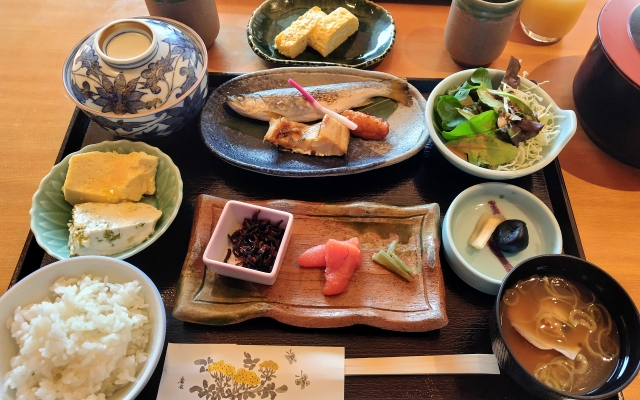
Why travelers love it: Staying at a ryokan feels like stepping into another world. You’re not just eating dinner—you’re tasting Japanese culture itself.
Things to remember:
- Always take off your shoes before entering.
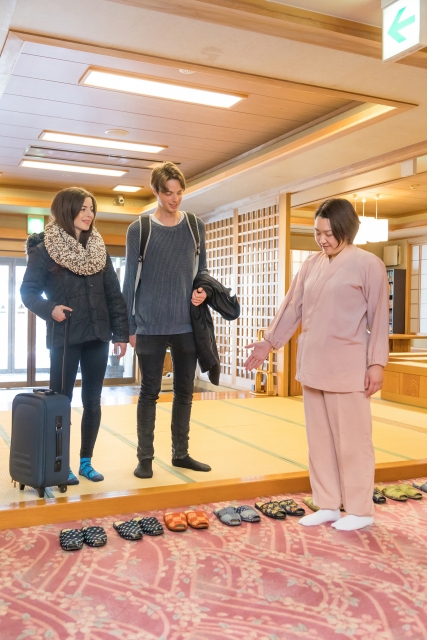
- Bathing etiquette matters: wash thoroughly before soaking in the hot spring.
- Prices are usually per person, not per room.
- Many ryokan have set dinner times, so arrive early enough to enjoy the meal.
旅館は日本の伝統的な宿で、畳の部屋、布団、温泉で有名です。しかし旅館を本当に思い出深いものにしているのは、食体験です。
夕食は懐石料理が主流で、小皿や漆器に美しく盛り付けられます。新鮮な刺身から旬の野菜まで、一品一品が芸術作品のようです。朝食は焼き魚、ご飯、味噌汁、漬物といった伝統的な和朝食が一般的です。
旅行者に愛される理由:旅館に泊まることは、まるで別世界へ足を踏み入れるような感覚です。単に夕食を食べるだけでなく、日本文化そのものを味わっているのです。
覚えておくべきこと:多くの旅館では夕食の時間が決まっているため、食事を楽しむには早めに到着しましょう。
入室時は必ず靴を脱いでください。
入浴マナーを守りましょう:温泉に入る前にしっかり体を洗ってください。
料金は通常お一人様単位で、部屋単位ではありません。
Minshuku (民宿) – A Local Family’s Hospitality
If ryokan are elegant, minshuku are warm and personal. These small, family-run guesthouses often feel like you’re staying in someone’s home.
The meals are hearty and home-style—grilled fish, miso soup, or hot pot, depending on the region. You might even taste vegetables picked from the owner’s garden that morning.
Things to remember:
- Facilities are basic—shared bathrooms are common.
- Meals are served at fixed times, so being late is considered impolite.
- You might hear more Japanese than English, so be ready with a smile and some basic phrases.
旅館が優雅なら、民宿は温かみと親しみがあります。こうした小さな家族経営の宿は、まるで誰かの家に泊まっているような感覚を味わわせてくれるのです。
食事は家庭的でボリュームたっぷり——焼き魚、味噌汁、あるいは鍋料理など、地域によって異なります。その朝、宿の庭で摘んだ野菜を味わえることもあるんですよ。
覚えておくべきこと:
設備は基本的なもの—共用バスルームが一般的です。
食事は決まった時間に提供されるため、遅刻は失礼とみなされます。
英語より日本語を耳にする機会が多いかもしれません。笑顔と基本的なフレーズを準備しておきましょう。
Pension (ペンション) – A Cozy, Western-Style Stay
A pension is Japan’s version of a Western-style bed and breakfast, often found in ski resorts or the countryside.
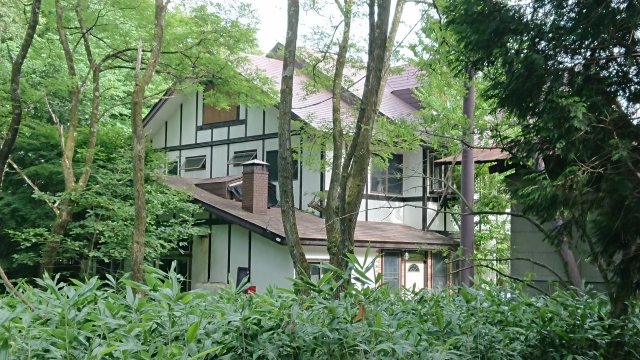
Rooms usually have beds instead of futons, and the meals are Western-style too—think omelets, bread, or even steak dinners.
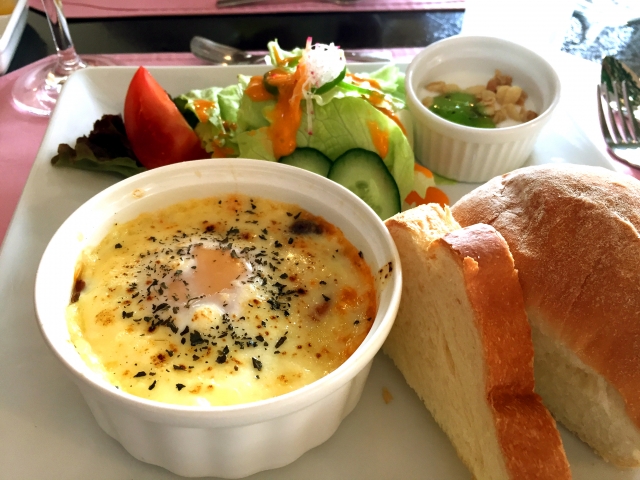
It’s a nice choice if you want something casual and familiar, but still small and personal compared to a large hotel.
ペンションとは、日本の西洋式ベッド&ブレックファスト(B&B)に相当する宿泊施設で、スキーリゾートや田舎によく見られます。部屋には布団ではなくベッドが備わり、食事も西洋風——オムレツやパン、ステーキディナーなど——が提供されます。
カジュアルで親しみやすい雰囲気を求めつつ、大規模なホテルに比べてこぢんまりとした個人的な空間を望む方には最適な選択肢です。
Hotels (ホテル) – From Business to Luxury
Japan’s hotels cover everything from tiny business hotels near train stations to luxurious international chains.
- Business hotels: Practical and affordable, though rooms are small.
- Luxury hotels: Spacious, international comfort, often with English-speaking staff.
- Capsule hotels: Fun for one night—tiny pods instead of rooms, shared baths.
Hotels are convenient and easy to book, especially if you prefer something familiar.
日本のホテルは、駅前の小さなビジネスホテルから豪華な国際チェーンまで多岐にわたります。
ビジネスホテル:実用的で手頃な価格ですが、部屋は狭めです。
高級ホテル:広々として国際的な快適さを提供し、英語対応可能なスタッフが常駐していることが多いです。
カプセルホテル:一晩の滞在に最適——部屋ではなく小さなポッド型個室、共用バスルームです。ホテルは便利で予約も簡単です。特に慣れ親しんだ環境を好む方にはおすすめです。
Tips to Avoid Mistakes
No matter where you stay in Japan, here are some things that will save you from awkward moments:
- Shoes off indoors: Always remove them at the entrance of ryokan and minshuku.
- Bath rules: Rinse and scrub first, soak second. Never bring towels into the bath.
- Timing matters: Meals are usually served at specific times—don’t be late.
- Quiet hours: Japanese inns often value silence. Keep noise low at night.
日本国内のどこに滞在しても、気まずい場面を避けるためのポイントをご紹介します:
室内では靴を脱ぐ:旅館や民家の玄関では必ず靴を脱ぎましょう。
風呂のルール:まず体を洗い、その後入浴します。タオルを浴槽に持ち込まないでください。
時間厳守:食事は決まった時間に提供されます。遅れないようにしましょう。
静粛時間:日本の宿では静けさが大切にされます。夜間は騒音を控えめに。
Conclusion(まとめ)
Each accommodation in Japan has its own charm:
- A ryokan offers elegance and unforgettable meals.
- A minshuku gives you warm, local hospitality.
- A pension feels cozy and Western.
- A hotel provides convenience and familiarity.
If you’re unsure about pricing, the best approach is to check a hotel booking site or comparison tool, since costs vary a lot depending on the region and season.
Whichever you choose, you’ll not only have a place to sleep—you’ll discover a whole new way to experience Japan.
日本の宿泊施設にはそれぞれ魅力があります:
旅館は優雅さと忘れられない食事を提供します。
民宿は温かい地元のおもてなしを感じさせてくれます。ペンションは居心地が良く西洋風です。
ホテルは便利さと親しみやすさを提供します。
料金が気になる場合は、ホテル予約サイトや比較ツールで確認するのが最善です。地域や季節によって大きく変動するためです。どの宿泊施設を選んでも、単に泊まる場所が得られるだけでなく、日本をまったく新しい形で体験する方法を発見できるのです。
🍱 Ryokan Food Photo Guide
📸 Sashimi Boat (船盛・Funamori)
Fresh sashimi artfully arranged on a wooden boat-shaped platter. A truly eye-catching dish, perfect for sharing!
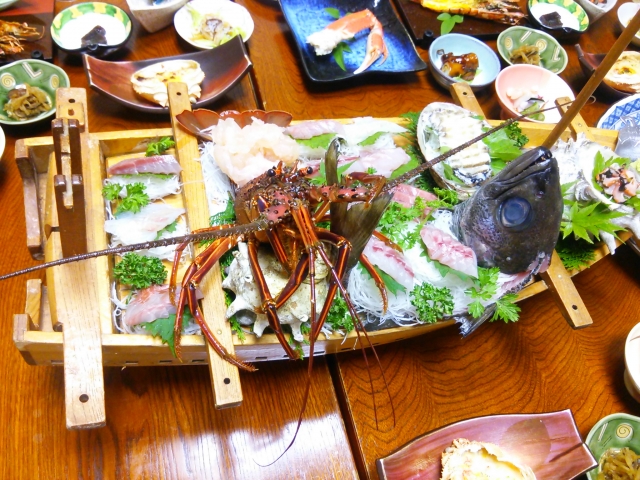
The wooden boats are often made from cypress, whose pleasant aroma stimulates the appetite.
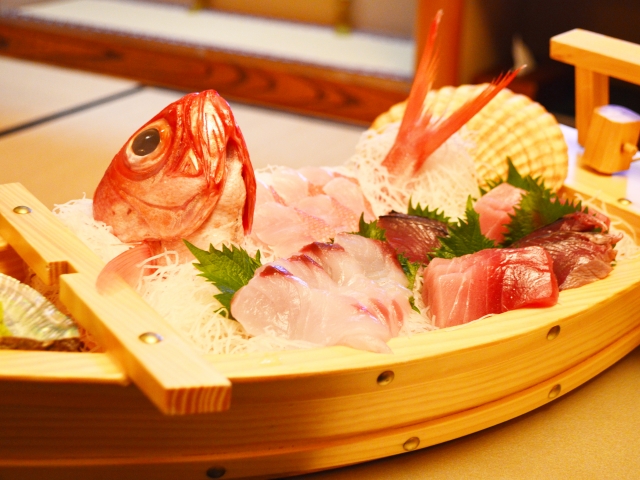
A common presentation involves preparing a whole fish like horse mackerel or sea bream and displaying it as the head of the arrangement.
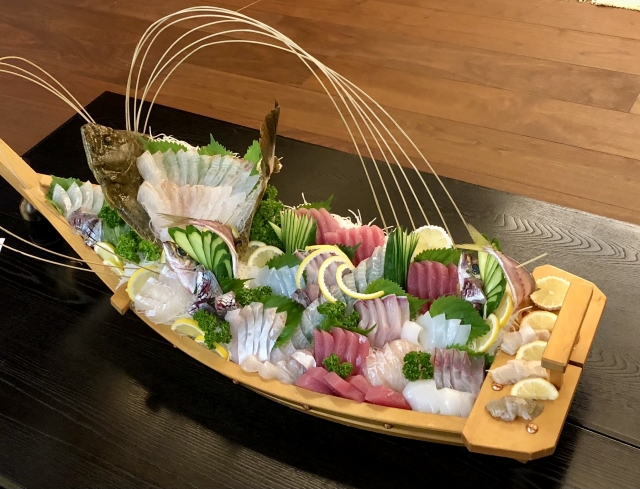
船盛
木製の舟型のお皿に美しく盛り付けられた新鮮な刺身。まさに目を奪われる一品で、シェアに最適です!
木の船の素材はヒノキが多く、香りも良いので、食欲をそそります。
鯵や鯛などを一匹さばいて、それをお頭として飾る手法が多いです。
📸 Enjoy “Sukiyaki” or “Yosenabe” in mini pots
Sukiyaki is enjoyed in your own small pot where thinly sliced beef, tofu, and vegetables simmer away. Sweet and savory, cooking it right at the table is fun too.
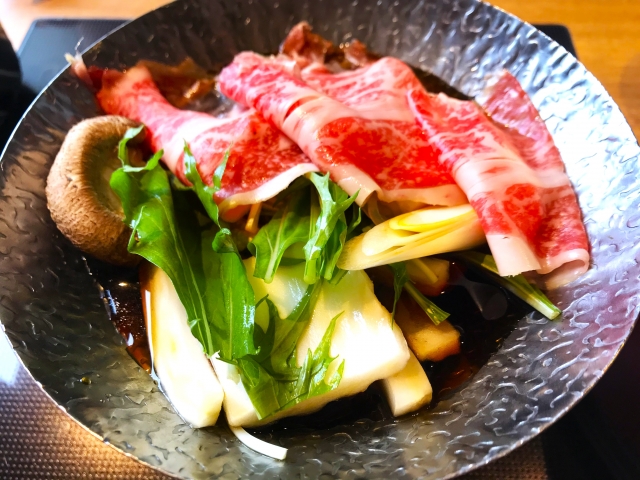
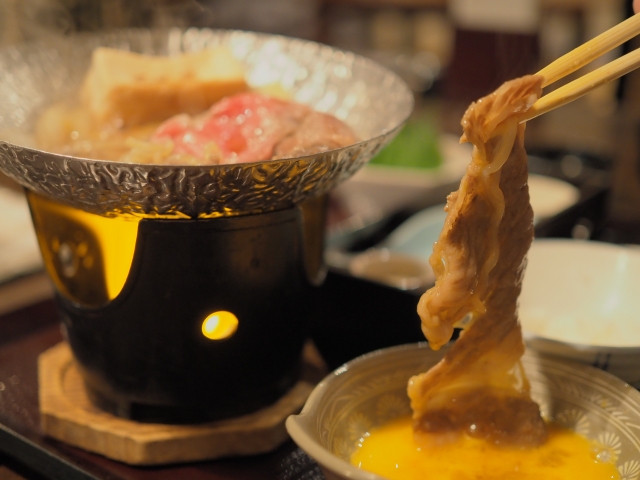
Yosenabe features a variety of ingredients like chicken, seafood, vegetables, and tofu, seasoned with dashi broth made from bonito flakes and kombu seaweed.
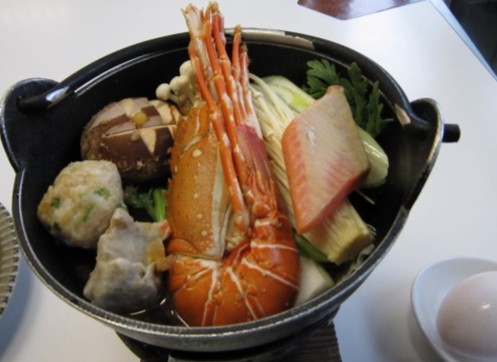
一人用のすき焼きや寄せ鍋
すき焼きは、薄切りの牛肉、豆腐、野菜がぐつぐつ煮える自分だけの小さな鍋で食べることが出来ます。甘くて旨くて、テーブルで調理するのも楽しいです。
寄せ鍋は鳥肉、魚介類、野菜、豆腐など、いろいろな具材が入りカツオや昆布のだしで味付けしています。

Sukiyaki and hot pot are delicious when shared. At Japanese restaurants, you can order them in large pots.
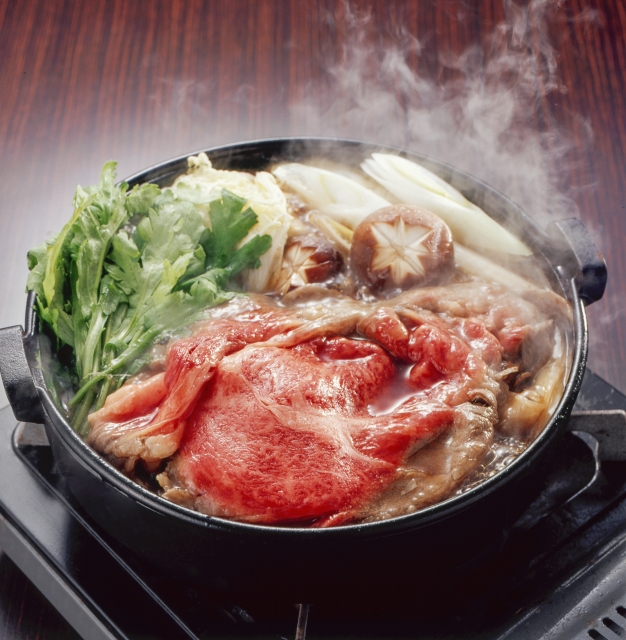
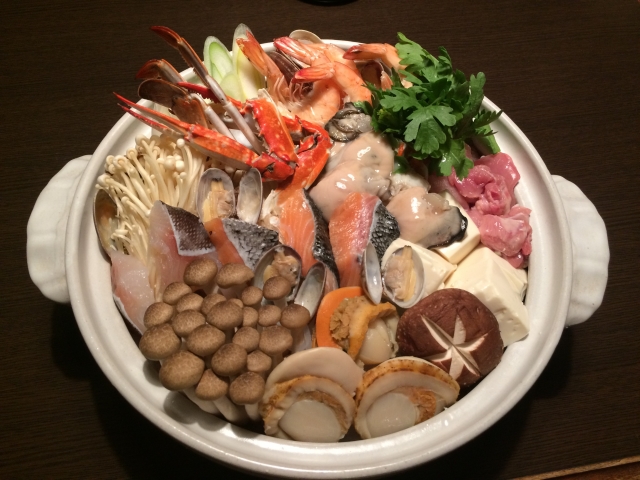
With plenty of ingredients creating complex flavors, they’re incredibly tasty. I highly recommend giving them a try.
📸 Kaiseki-Style Delicacies A Feast for the Eyes
Delicate courses like Mukōzuke (starter dish, often sashimi) and Shiizakana (main dish, like grilled fish or beef). Each plate is arranged like art.
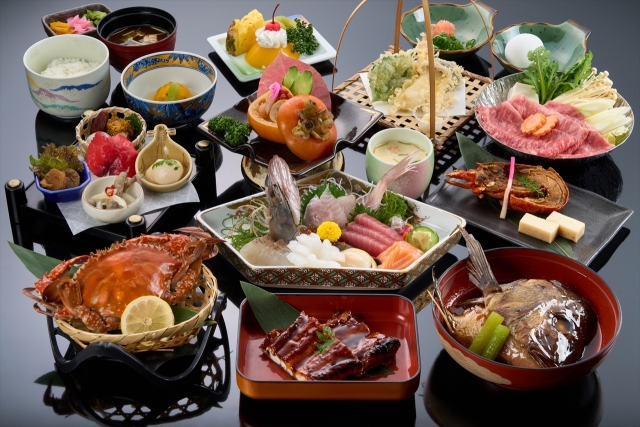
From lacquer bowls to handmade pottery, meals at inns are served on exquisite tableware that complements the season.
Japan has a concept of beauty called “flowers, birds, wind, and moon,” which is reflected in both the vessels and the cuisine.
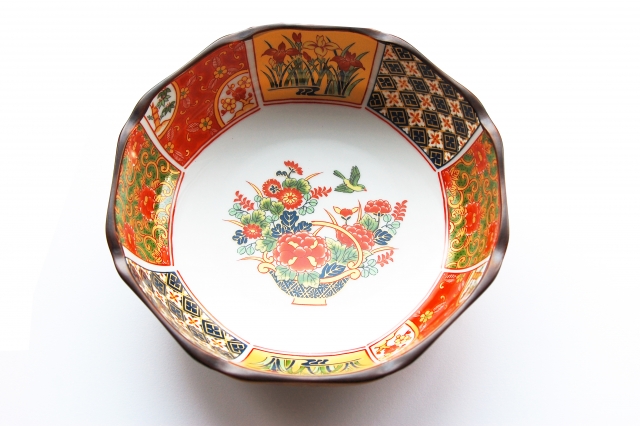
懐石料理の珍味 目を楽しませる宴
向付という前菜(刺身など)や強肴という主菜(焼き魚や牛肉など)といった繊細な料理。各皿は芸術のように盛り付けられています。
漆器の椀から手作りの陶器まで、旅館の食事は季節に合わせた見事な食器で提供されます。日本には「花鳥風月」という美の概念があり、それを器や料理に反映させているのです。

Japan has a card game called “hanafuda.” Its designs feature seasonal flowers and birds from January to December, along with gentle breezes and the moon. The appreciation for nature—flowers, birds, wind, and moon—is deeply rooted in the Japanese heart.
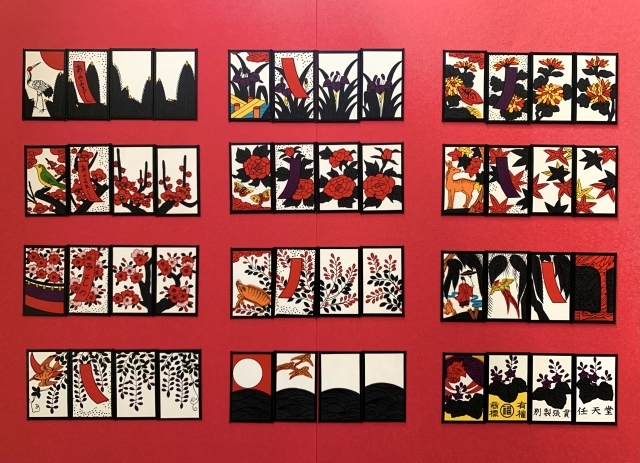
👉 Tip: Pace yourself—ryokan dinners often have way more courses than you expect!
ペース配分に気をつけて—旅館の夕食は、想像以上に多くの料理が出てくることが多いのです!





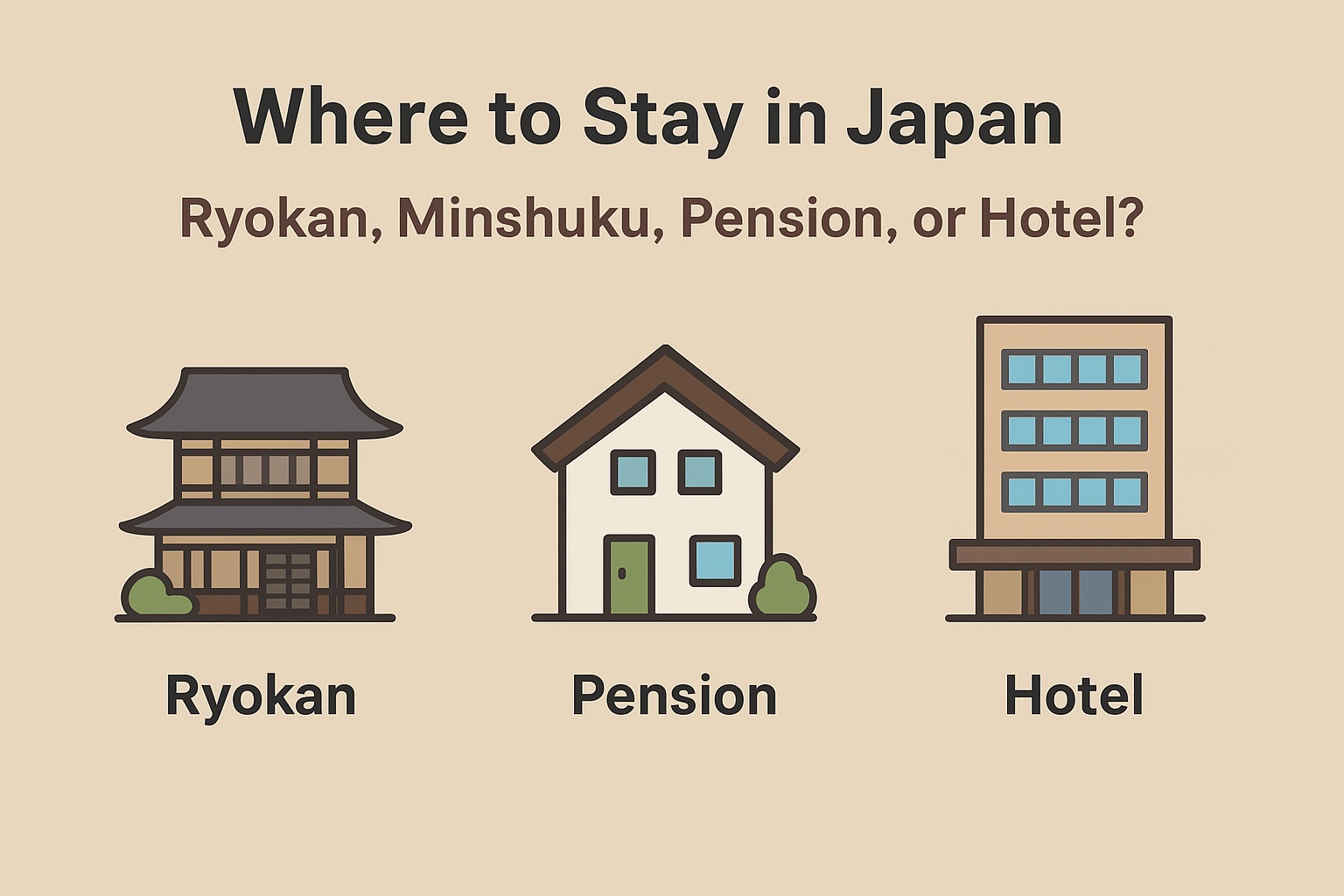


Comments